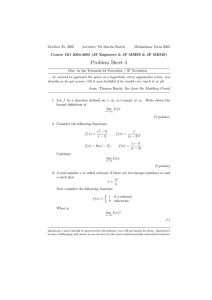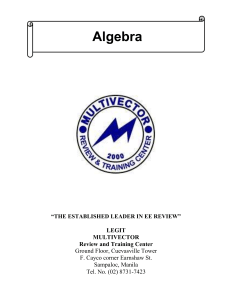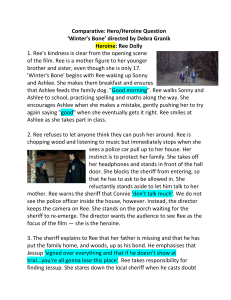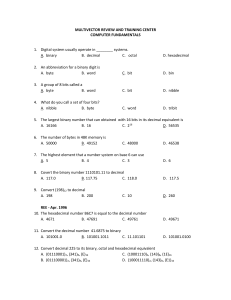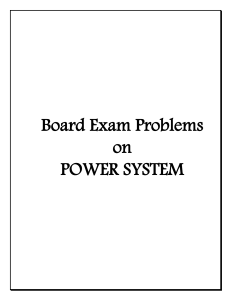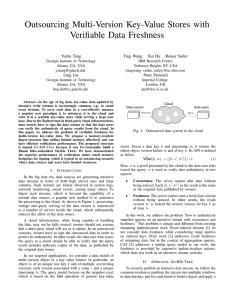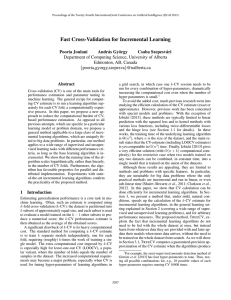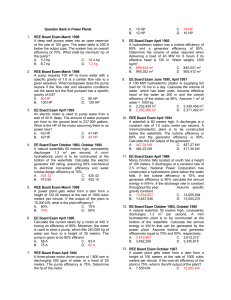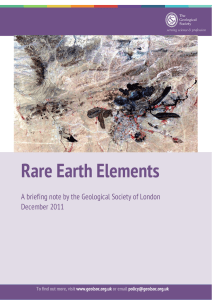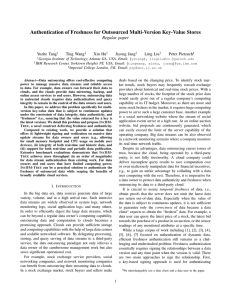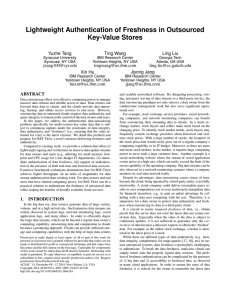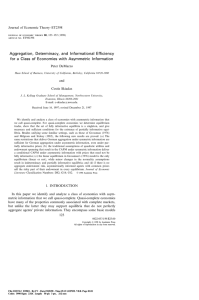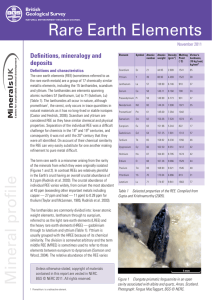Document 13590451
advertisement
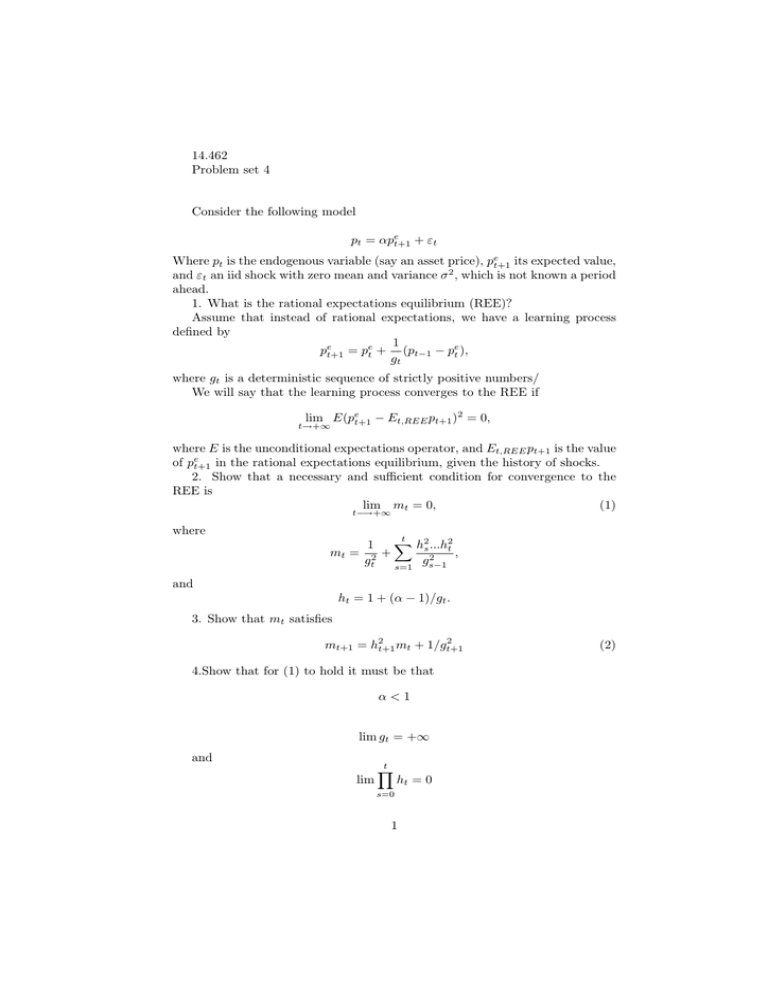
14.462 Problem set 4 Consider the following model pt = αpet+1 + εt e Where pt is the endogenous variable (say an asset price), pt+1 its expected value, 2 and εt an iid shock with zero mean and variance σ , which is not known a period ahead. 1. What is the rational expectations equilibrium (REE)? Assume that instead of rational expectations, we have a learning process defined by 1 pet+1 = pte + (pt−1 − pte ), gt where gt is a deterministic sequence of strictly positive numbers/ We will say that the learning process converges to the REE if lim E(pet+1 − Et,REE pt+1 )2 = 0, t→+∞ where E is the unconditional expectations operator, and Et,REE pt+1 is the value of pet+1 in the rational expectations equilibrium, given the history of shocks. 2. Show that a necessary and sufficient condition for convergence to the REE is lim mt = 0, (1) t−→+∞ where t mt = � h2 ...h2 1 s t , + 2 2 gt g s−1 s=1 and ht = 1 + (α − 1)/gt . 3. Show that mt satisfies 2 mt+1 = h2t+1 mt + 1/gt+1 4.Show that for (1) to hold it must be that α < 1 lim gt = +∞ and lim t � ht = 0 s=0 1 (2) 5. Show that the latter condition is asymptotically equivalent to +∞ � 1/gt = +∞. 0 6. Does the learning process converge to the REE is gt is a constant? If gt = 1/(t + 1)2 ? 7. Assume gt = 1/(t + 1). Show that (1) is satisfied (hint: use (2) and look for β > 0 such that one can show by induction that mt < At−β for t large enough). 8. Intuitively, what are the problems if gt converges ”too fast” or ”too slowly” to infinity? 2

